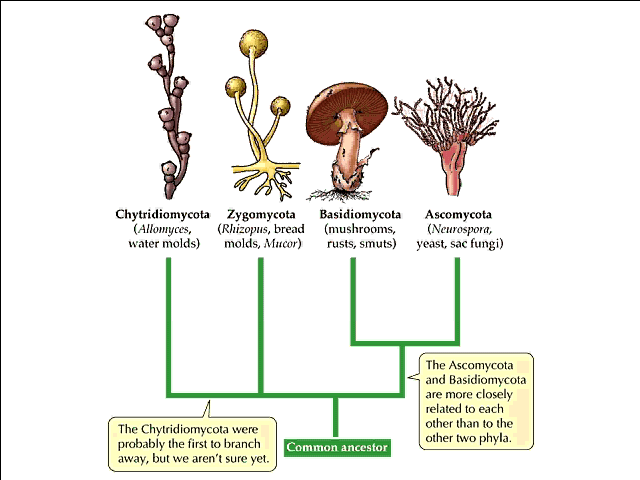Evolution(4):
- Fungi evolved around 900 million years ago, developing in aquatic biotypes, originally from eukaryotic, single-celled protists
- Plants and fungi share no general homologous structures, other than those carried over from their protist days
- Fungi are regarded as being in their own kingdom
- Plants played a role in fungal evolution by carrying them onto land (plants and fungi continue to share a symbiotic relationship)
- Divided into three main groups: Zygomycetes (Zygomycota), Sac fungi (Ascomycota), and Club fungi (Basidiomycota)
Fossil History(5):find a date yo
- The oldest fossil fungi so far known are chytrid-like forms from the Vendian of northern Russia
- Chytrids may give us a good picture of what the ancestors of fungi were like
- Therefore, fungi probably got their start in the water, as did plants and vertebrates
- Chytrids have flagellated gametes- no other fungi have flagella, suggests that the other fungi lost this trait at some point in their evolutionary history
- Like other fungi, chytrids have chitin strengthening their cell walls; one subgroup (Hyphochytrids) have cellulose as well, a trait unique among living fungi

